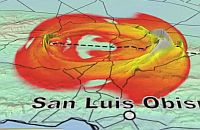 Today Nvidia announced that researchers at the San Diego Supercomputer Center have won the inaugural Global Impact Award and its $150,000 prize. The researchers were honored for their work using high performance computing to understand how earthquakes occur and their impact on the earth’s behavior.
Today Nvidia announced that researchers at the San Diego Supercomputer Center have won the inaugural Global Impact Award and its $150,000 prize. The researchers were honored for their work using high performance computing to understand how earthquakes occur and their impact on the earth’s behavior.
Led by computational scientist Yifeng Cui, researchers from the center, located at the University of California, San Diego, and other institutions developed a GPU-accelerated code to create detailed simulations of high-frequency seismic waves as they propagate through the earth. This code, known as AWP-ODC, is used by the Southern California Earthquake Center to simulate how earthquakes make the ground move. It’s a breakthrough for predicting ground motions that affect small homes and structures, which are more vulnerable to high-frequency shaking. Large structures, such as skyscrapers and highway overpasses, are at risk during long-period shaking.
While the computational demands of the research are intense, using NVIDIA GPUs helped the researchers create seismic hazard models and simulate ground motions from large fault ruptures to frequencies as high as 10 Hertz in a physically realistic way for the first time.
Other finalists for the Global Impact Award included Baylor College of Medicine, for using GPUs to unfold loops in a cell’s genome; the Institute of Bioinformatics at the Johannes Kepler University in Linz, Austria, which is deploying GPUs for toxicity prediction; Oak Ridge National Laboratory, where researchers use GPUs to produce high-definition global population data; and University of Illinois, Urbana-Champaign, where GPU-accelerated supercomputers analyze communication between cells and viruses.
Nvidia is now accepting submissions for the 2016 award through the end of October.



